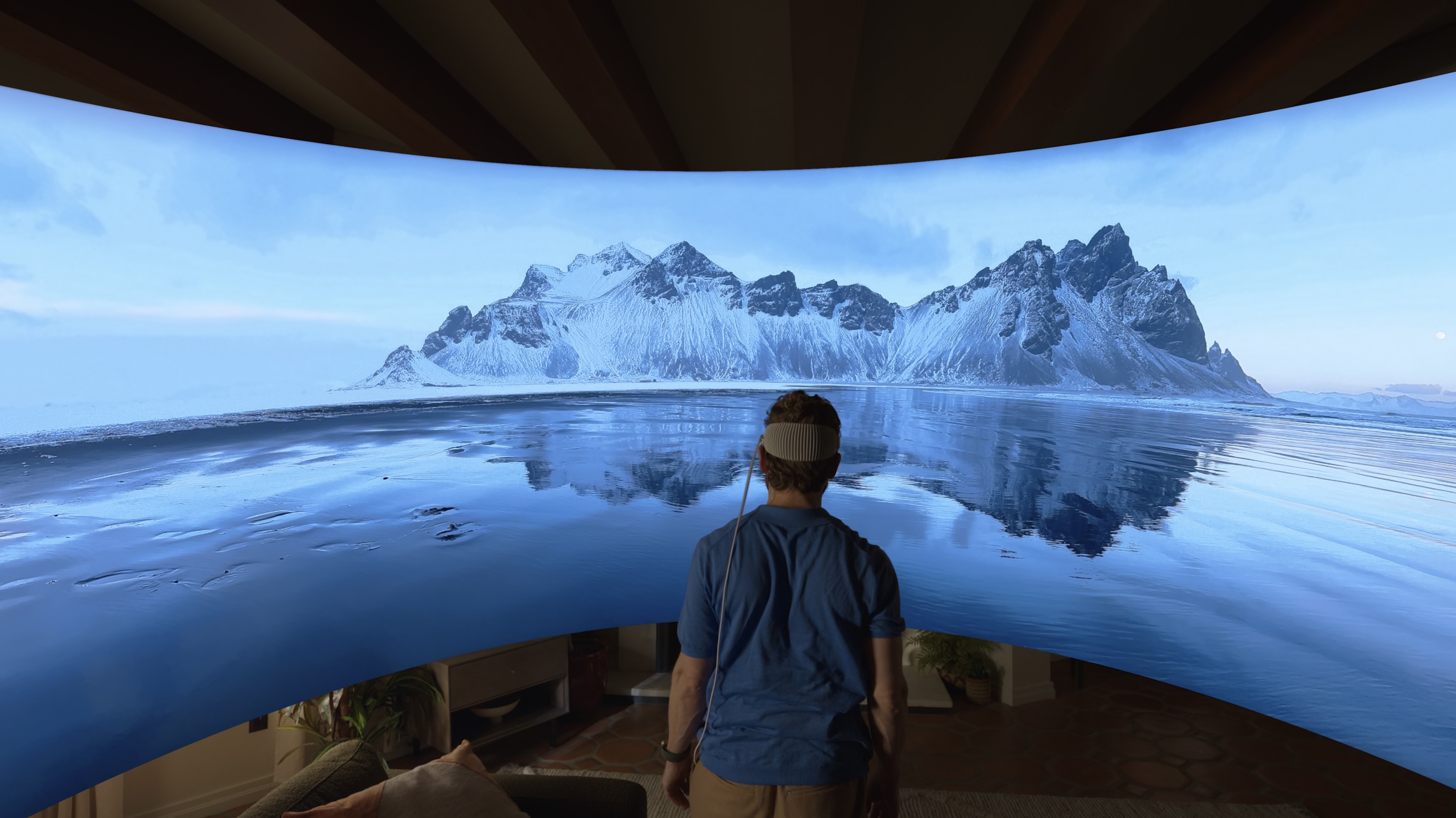Creating immersive Apple Vision Pro videos requires cameras that don't exist yet, but Canon's working to change that
It's going to take a lot of pixels.

The Apple Vision Pro has been on sale for more than a month now and while some of the excitement has started to die down, it's still one of the hottest products around. So much so that it's a topic of discussion among other companies as they try to get their ducks in a row for a post-Apple Vision Pro world. Camera-maker Canon is one such company, and it's already hard at work to make cameras that are designed to cope with the extremely high demands of creating content for use on mixed reality headsets.
The Apple Vision Pro comes with a handful of tech demos that show the kind of immersive video content that could be offered on the headset. These include virtual worlds that allow people to pretend that they are at famous landmarks — and even on the moon — while getting their work done. However, creating such content is difficult, and in the case of those virtual environments, Apple has chosen a largely static experience. Apple hasn't explained exactly how it went about building those environments, but camera outfit Canon is developing hardware that could produce content that will offer moving video that features people, animals, and more. The problem? Those cameras just don't exist yet.
When they will exist isn't clear yet, but the specifications being discussed are mindboggling. Canon believes that 100-megapixel sensors will be needed, creating videos that sport a 14K resolution — very much improved upon the 8K standard that isn't even in wide use yet.
8K is so last year
The news that Canon is already all over the Apple Vision Pro comes after an interview with PetaPixel at the CP+ camera exhibition in Yokohama, Japan. Tetsuji Kiyomi, Advisory Director and Unit Executive within the Image Communication Business Operations at Canon, told the outlet that trends already suggest that AR and VR content will be a focus through 2024.
On the subject of Apple's virtual environments, it's been suggested that the company used a RED 8K camera as the basis for some of its footage, but that's as-yet unconfirmed. But Yasuhiko Shiomi, Advisory Director and Unit Executive of the Image Communication Business Operations at Canon, says that upgrading those static environments to something that moves and can be zoomed in on will require at least 100-megapixel sensors. Throw in the need for a fluid 60 frames per second, and the requirements quickly outstrip what's possible right now.
“So at the moment, we can’t cater to that level of a requirement. But what I presume what companies who will be providing images for the Vision Pro will be required to have 100 megapixels with 60 frames per second,” Shiomi explained to Petapixel.
To put this all into perspective, PetaPixel notes that creating content for use at the Sphere in Las Vegas requires a special Big Sky camera. That has an 18K resolution but isn't commercially viable, partly because it requires 12 people to use it.
iMore offers spot-on advice and guidance from our team of experts, with decades of Apple device experience to lean on. Learn more with iMore!
Still, Canon isn't fazed. “So we haven’t been able to do that to be commercially viable yet. But if you don’t mind, please look forward to whether we can do that or not,” Tokura says. “But technically, theoretically, we can do that. However, the problem is whether we can come up with the products that can be commercially viable and a price can be affordable enough for the customers to be able to buy them.”
The upshot? It's probably a safe bet that we won't be creating immersive videos using iPhones any time soon, no matter how good spatial videos might be.
More from iMore

Oliver Haslam has written about Apple and the wider technology business for more than a decade with bylines on How-To Geek, PC Mag, iDownloadBlog, and many more. He has also been published in print for Macworld, including cover stories. At iMore, Oliver is involved in daily news coverage and, not being short of opinions, has been known to 'explain' those thoughts in more detail, too.
Having grown up using PCs and spending far too much money on graphics card and flashy RAM, Oliver switched to the Mac with a G5 iMac and hasn't looked back. Since then he's seen the growth of the smartphone world, backed by iPhone, and new product categories come and go. Current expertise includes iOS, macOS, streaming services, and pretty much anything that has a battery or plugs into a wall. Oliver also covers mobile gaming for iMore, with Apple Arcade a particular focus. He's been gaming since the Atari 2600 days and still struggles to comprehend the fact he can play console quality titles on his pocket computer.
